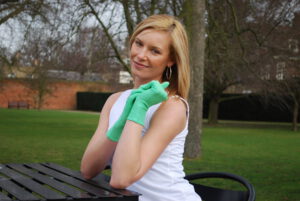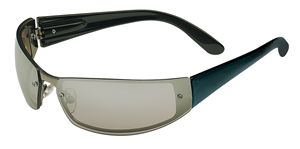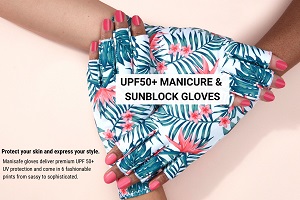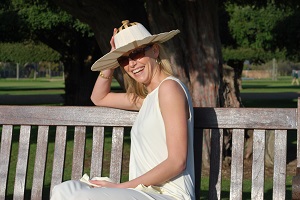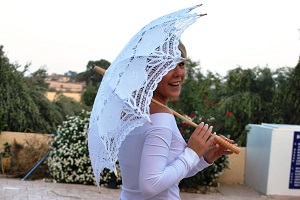© 2025 All rights reserved
Sunsibility Shines a Light on Sun Awareness Week 2024
As the UK’s leading brand in luxury UV protection and sustainable fashion, SunSibility is dedicated to promoting sun safety and raising awareness about the importance of protecting your skin from harmful UV rays. With Sun Awareness Week 2024 approaching, from 6th to 12th May, we are excited to support the British Association of Dermatologists (BAD) in educating the public about the risks of UV exposure and the best practices for sun protection. This year, the focus will be on non-melanoma skin cancer, the most common type of skin cancer in the UK. At SunSibility, we believe that by providing high-quality UV protective clothing and accessories, along with valuable information and resources, we can help people enjoy the sun safely and reduce the incidence of skin cancer.
Understanding the Risks of UV Exposure

Exposure to ultraviolet (UV) radiation from the sun or artificial sources, such as sunbeds, can lead to various types of skin damage and cancer. The two main categories of skin cancer are non-melanoma skin cancer (NMSC) and melanoma. NMSC, which includes basal cell carcinoma (BCC) and squamous cell carcinoma (SCC), is the most common type of skin cancer, with over 156,000 new cases diagnosed in the UK each year. Although not as life-threatening as melanoma, NMSC can still cause significant disfigurement and discomfort if left untreated.
Melanoma, on the other hand, is the most serious type of skin cancer, accounting for the majority of skin cancer deaths. In the UK, more than 16,000 people are diagnosed with melanoma annually, and the incidence rates have been increasing in recent years.
In addition to skin cancer, UV exposure can cause other forms of skin damage, such as premature ageing, sunburn, and hyperpigmentation. Premature ageing, characterised by wrinkles, sagging skin, and age spots, is primarily caused by cumulative sun exposure over time. Sunburn, a painful reddening of the skin that can lead to peeling and blistering, is a sign of severe UV damage and increases the risk of developing skin cancer. Hyperpigmentation, or the darkening of the skin in patches, can also be triggered by UV exposure and may be a sign of underlying skin damage.
With skin cancer rates on the rise in the UK, it is more important than ever to understand the risks associated with UV exposure and take proactive steps to protect your skin.
Sun Awareness Week 2024: Focus on Non-Melanoma Skin Cancer
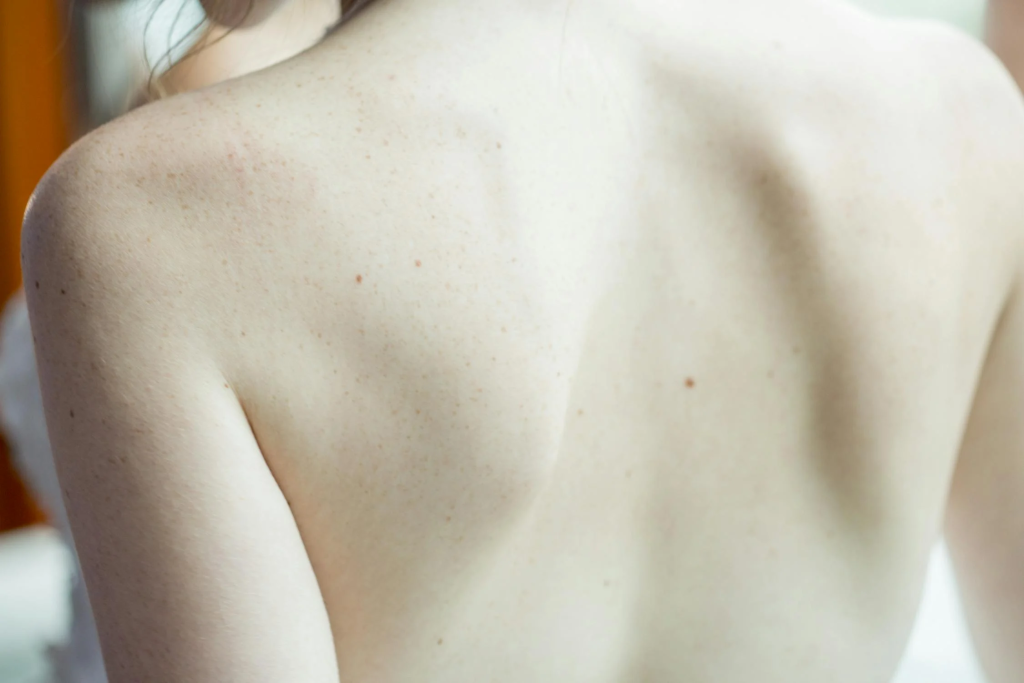
This year, Sun Awareness Week 2024 will shine a spotlight on non-melanoma skin cancer (NMSC), the most common type of skin cancer in the UK. NMSC encompasses basal cell carcinoma (BCC) and squamous cell carcinoma (SCC), which develop in the upper layers of the skin.
BCC accounts for about 75% of all skin cancers and typically appears as a small, shiny pink or pearly-white lump with a translucent or waxy appearance. It can also present as a red, scaly patch or a sore that doesn’t heal. BCC grows slowly and rarely spreads to other parts of the body, but it can cause significant damage to surrounding tissues if left untreated.
We are working with many hospitals throughout the UK who are running event stands and free mole check clinics, handing out our brochures and donating gift baskets with products and gift vouchers for visitors.
SCC, responsible for about 20% of skin cancers, usually appears as a firm pink lump with a rough or crusted surface. It can also manifest as a flat, scaly red patch that may bleed easily or develop into an ulcer. SCC grows more quickly than BCC and has a higher risk of spreading to other parts of the body.
The primary risk factors for developing NMSC include excessive UV exposure, fair skin, a history of sunburn, a weakened immune system, and a personal or family history of skin cancer. Regular use of sunbeds also significantly increases the risk of developing NMSC.
During Sun Awareness Week 2024, SunSibility will be actively working to raise awareness about the signs and symptoms of NMSC and the importance of early detection and treatment. By educating our customers and the general public about how to identify potential skin cancers, we hope to encourage more people to perform regular skin self-exams and seek prompt medical attention if they notice any concerning changes in their skin.
Throughout the week, we will be sharing informative content on our website and social media channels to help spread the message of sun safety and early detection. By empowering people with the knowledge and tools they need to protect their skin and catch skin cancer early, we believe we can make a meaningful difference in the fight against NMSC.
Best Practices for Skin Cancer Prevention

At SunSibility, we believe that the key to reducing the incidence of skin cancer lies in practising proper sun protection techniques and making sun safety a daily habit. Here are some of the best practices we recommend for protecting your skin from harmful UV rays:
- Wear protective clothing: One of the most effective ways to shield your skin from UV radiation is to wear clothing that covers as much of your body as possible. Look for garments with a high Ultraviolet Protection Factor (UPF) rating, which indicates how much UV radiation the fabric blocks. SunSibility’s range of UV protective clothing offers UPF 50+ protection, blocking out 97.5% of UV rays. Our collection includes a variety of styles for women, men, and children, so you can find the perfect pieces to suit your needs and preferences.
- Apply sunscreen: In addition to wearing protective clothing, it’s crucial to apply a broad-spectrum sunscreen with an SPF of at least 30 to all exposed areas of skin. Be sure to apply sunscreen generously and reapply every 2 hours, or more frequently if you’re swimming or sweating heavily. Don’t forget to protect often-overlooked areas like the ears, neck, and scalp.
- Seek shade during peak UV hours: The sun’s rays are strongest between 10 a.m. and 4 p.m., so it’s best to limit your time outdoors during these peak hours. If you must be outside, try to stay in the shade as much as possible, using trees, umbrellas, or shade structures for protection.
- Wear sunglasses and wide-brimmed hats: Protecting your eyes and face from UV radiation is essential for reducing the risk of cataracts, eyelid cancers, and premature ageing. Choose sunglasses that provide 100% UV protection and wear a wide-brimmed hat to shade your face, ears, and neck.
In addition to our clothing range, SunSibility offers a selection of UV protective accessories, including hats, sunglasses, and umbrellas, to help you stay safe in the sun.
Despite the clear evidence of the dangers of UV exposure, many people still hold misconceptions about sun protection. One common myth is that you only need to wear sunscreen on sunny days. In reality, UV rays can penetrate through clouds and reflect off surfaces like water, sand, and concrete, so it’s important to practise sun safety every day, regardless of the weather.
Another myth is that having a tan protects you from sun damage. While a tan may provide some minimal protection, it is still a sign of skin damage and does not offer adequate defence against UV radiation. The only safe way to achieve a tanned appearance is through the use of self-tanning products.
By dispelling these myths and promoting a comprehensive approach to sun protection, SunSibility aims to empower people to make informed choices about their skin health and reduce their risk of developing skin cancer.
How to Perform a Skin Self-Exam

Regular skin self-exams are a crucial component of early skin cancer detection. By familiarising yourself with your skin’s normal appearance, you’ll be better equipped to notice any changes or irregularities that may be cause for concern. SunSibility recommends performing a thorough skin self-exam at least once a month, following these steps:
- Stand in front of a full-length mirror in a well-lit room, and use a hand mirror to examine hard-to-see areas like your back and scalp.
- Start with your face and work your way down, systematically checking your entire body for any new or changing moles, spots, or patches.
- Pay special attention to areas that are frequently exposed to the sun, such as your face, ears, neck, chest, and hands.
- Use the ABCDEs of melanoma as a guide when evaluating moles or spots:
- Asymmetry: One half of the mole doesn’t match the other
- Border: The edges are irregular, ragged, or blurred
- Colour: The colour is not uniform and may include shades of brown, black, or even red, white, or blue
- Diameter: The spot is larger than 6mm (about the size of a pencil eraser)
- Evolution: The mole is changing in size, shape, or colour
- If you notice any new, changing, or unusual spots, or if you have a spot that matches any of the ABCDE criteria, schedule an appointment with a dermatologist for a professional evaluation.
By making skin self-exams a regular habit, you’ll be taking a proactive step in catching skin cancer early when it’s most treatable. SunSibility encourages all our customers and followers to prioritise skin health and to share this important information with their loved ones.
SunSibility’s Commitment to Sun Safety Education
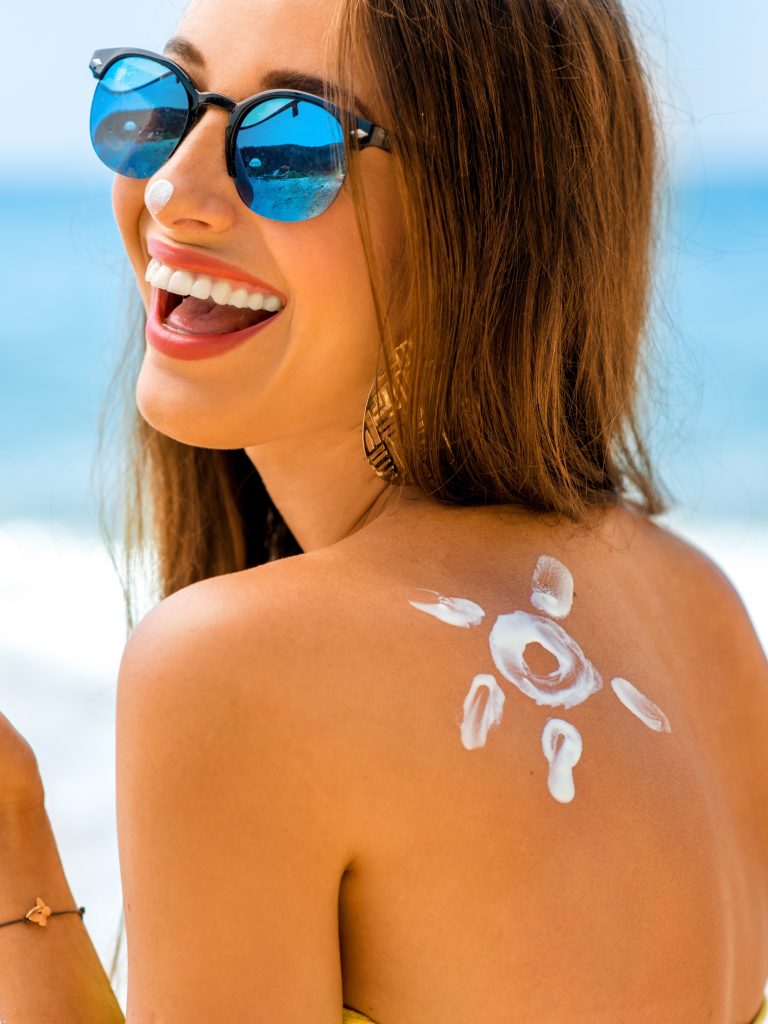
At SunSibility, we are passionate about promoting sun safety and empowering people to protect their skin from harmful UV rays. In addition to providing high-quality UV protective clothing and accessories, we are committed to educating our customers and the general public about the importance of sun safety and early skin cancer detection.
We have forged strong links with the medical profession and many charities such as Lupus UK and The Vitiligo Society. We are proud that SunSibility clothing and products help many enjoy a better standard of life, particularly those with heightened sensitivity to UV radiation due to autoimmune conditions.
SunSibility actively promotes sun safety through various events and campaigns throughout the year. During Sun Awareness Week and beyond, we participate in educational activities, such as sharing informative content on our website and social media channels, distributing informational materials, and engaging with our customers and followers to share sun safety tips and resources.
On our website, we provide a wealth of information about UV protection, skin cancer prevention, and the importance of regular skin self-exams. We also offer detailed product guides to help customers choose the right UV protective clothing and accessories for their needs, ensuring that they can make informed decisions about their sun safety practices.
We encourage our customers to get involved in Sun Awareness Week and other sun safety initiatives by sharing their own experiences, spreading awareness among their friends and family, and supporting organisations that are working to reduce the incidence of skin cancer.
At SunSibility, we believe that by combining education, advocacy, and high-quality UV protective products, we can create a healthier, more sun-safe world for everyone. We are dedicated to continuing our efforts to promote sun safety and support the skin health community for years to come.
Conclusion: Sun Awareness Week 2024
Sun Awareness Week 2024 serves as a powerful reminder of the importance of sun safety and early skin cancer detection. By understanding the risks of UV exposure, practising proper sun protection techniques, and performing regular skin self-exams, we can all take proactive steps to reduce our risk of developing skin cancer and catch it early when it’s most treatable.
As we approach this year’s Sun Awareness Week, SunSibility invites everyone to join us in spreading the message of sun safety and supporting the vital work of organisations like the British Association of Dermatologists. Whether you share sun safety tips with your loved ones or make a conscious effort to protect your skin every day, every action counts in the fight against skin cancer.
At SunSibility, we remain committed to providing high-quality UV protective clothing and accessories, educating our customers about sun safety, and supporting the skin health community through our initiatives. Together, we can create a healthier, more sun-safe future for all.
Join SunSibility in championing sun safety during Sun Awareness Week 2024—shield your skin, protect your health, and spread the word!
Further Reading
- Sun Safety | Skin Cancer | CDC: This page by the Centers for Disease Control and Prevention offers comprehensive information on sun safety, explaining how to protect your skin from UV rays effectively. This includes the use of sunscreen, protective clothing, and staying in the shade. Visit CDC’s Sun Safety
- Tips to Stay Safe in the Sun: From Sunscreen to Sunglasses | FDA: The Food and Drug Administration provides detailed tips on limiting sun exposure and choosing the right sunscreen, emphasising protection between 10 a.m. and 2 p.m. when UV rays are strongest. Read FDA’s Sun Safety Tips
- Sun Safety | Johns Hopkins Medicine: This resource covers the various ways you can protect yourself from harmful UV rays, including the application of broad-spectrum sunscreens and wearing protective clothing. It also discusses the risks associated with UV exposure. Explore Johns Hopkins Medicine’s Sun Safety Tips
- Sun Safety Tips | US EPA: The Environmental Protection Agency offers guidelines on how to stay safe in the sun, featuring a UV index that forecasts the strength of solar UV radiation expected for the day. Learn More from the EPA
- Sun Safety (for Parents) | Nemours KidsHealth: This page provides parents with crucial advice on protecting children from the sun, detailing proper sunscreen application and the importance of covering up during peak UV hours. Visit Nemours KidsHealth for Parental Guidance







